第25章
The elementary qualities are four, and any four terms can be combined in six couples. Contraries, however, refuse to be coupled:
for it is impossible for the same thing to be hot and cold, or moist and dry. Hence it is evident that the 'couplings' of the elementary qualities will be four: hot with dry and moist with hot, and again cold with dry and cold with moist. And these four couples have attached themselves to the apparently 'simple' bodies (Fire, Air, Water, and Earth) in a manner consonant with theory. For Fire is hot and dry, whereas Air is hot and moist (Air being a sort of aqueous vapour); and Water is cold and moist, while Earth is cold and dry.
Thus the differences are reasonably distributed among the primary bodies, and the number of the latter is consonant with theory. For all who make the simple bodies 'elements' postulate either one, or two, or three, or four. Now (i) those who assert there is one only, and then generate everything else by condensation and rarefaction, are in effect making their 'originative sources' two, viz. the rare and the dense, or rather the hot and the cold: for it is these which are the moulding forces, while the 'one' underlies them as a 'matter'. But (ii) those who postulate two from the start-as Parmenides postulated Fire and Earth-make the intermediates (e.g. Air and Water) blends of these. The same course is followed (iii) by those who advocate three. (We may compare what Plato does in Me Divisions': for he makes 'the middle' a blend.) Indeed, there is practically no difference between those who postulate two and those who postulate three, except that the former split the middle 'element' into two, while the latter treat it as only one. But (iv) some advocate four from the start, e.g. Empedocles: yet he too draws them together so as to reduce them to the two, for he opposes all the others to Fire.
In fact, however, fire and air, and each of the bodies we have mentioned, are not simple, but blended. The 'simple' bodies are indeed similar in nature to them, but not identical with them. Thus the 'simple' body corresponding to fire is 'such-as-fire, not fire: that which corresponds to air is 'such-as-air': and so on with the rest of them. But fire is an excess of heat, just as ice is an excess of cold. For freezing and boiling are excesses of heat and cold respectively. Assuming, therefore, that ice is a freezing of moist and cold, fire analogously will be a boiling of dry and hot: a fact, by the way, which explains why nothing comes-to-be either out of ice or out of fire.
The 'simple' bodies, since they are four, fall into two pairs which belong to the two regions, each to each: for Fire and Air are forms of the body moving towards the 'limit', while Earth and Water are forms of the body which moves towards the 'centre'. Fire and Earth, moreover, are extremes and purest: Water and Air, on the contrary are intermediates and more like blends. And, further, the members of either pair are contrary to those of the other, Water being contrary to Fire and Earth to Air; for the qualities constituting Water and Earth are contrary to those that constitute Fire and Air.
Nevertheless, since they are four, each of them is characterized par excellence a single quality: Earth by dry rather than by cold, Water by cold rather than by moist, Air by moist rather than by hot, and Fire by hot rather than by dry.